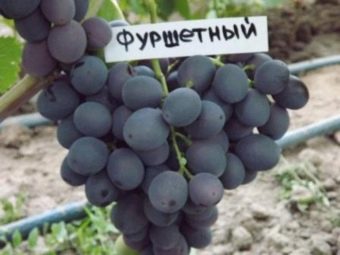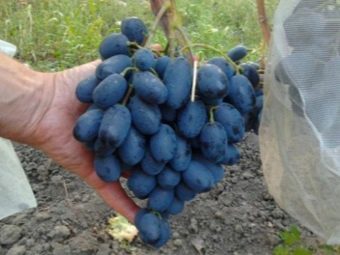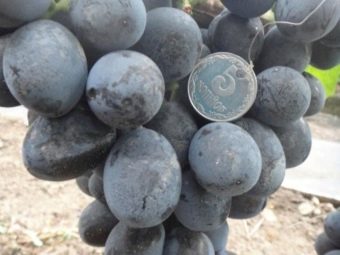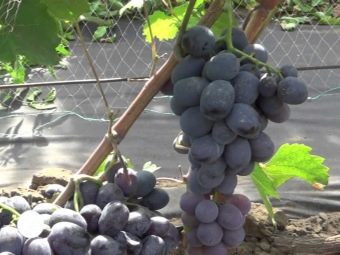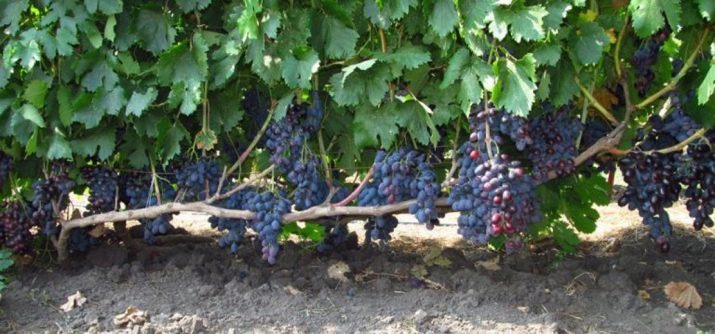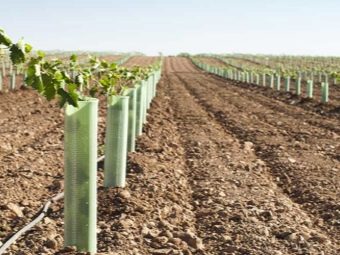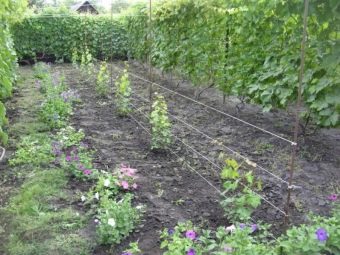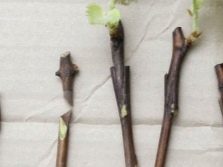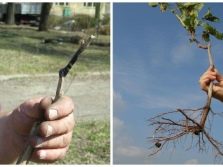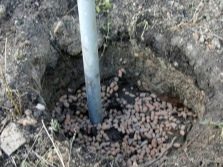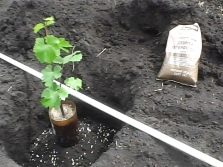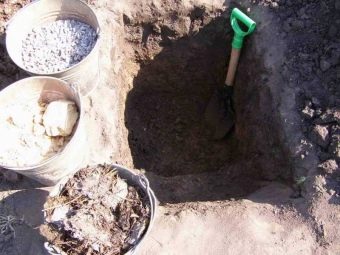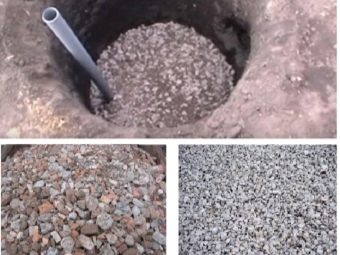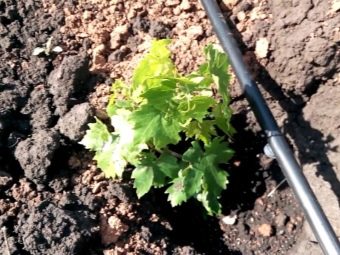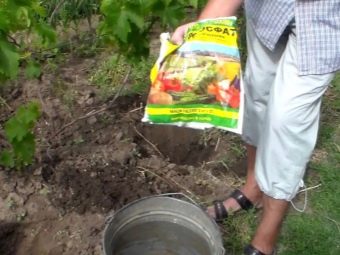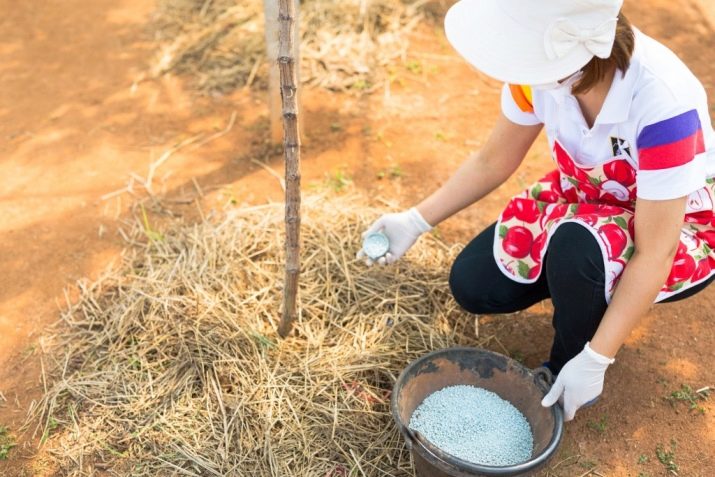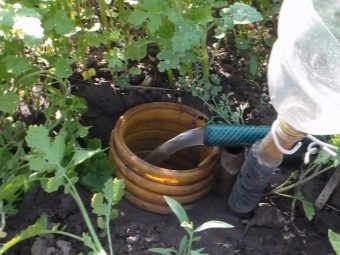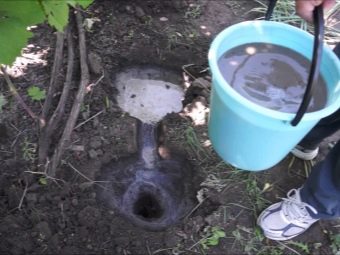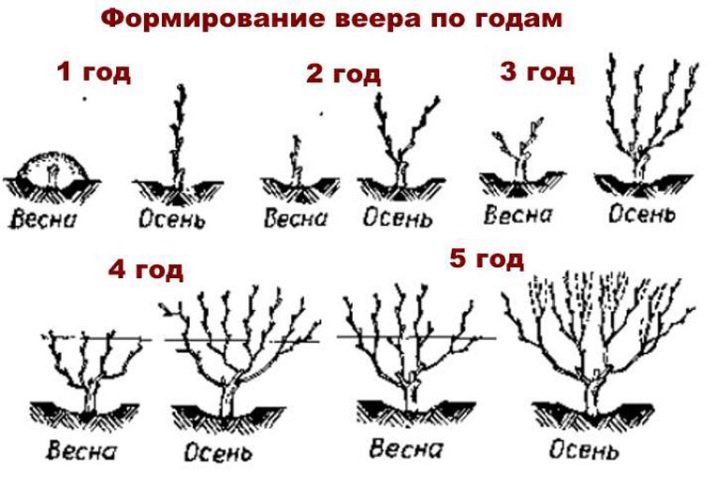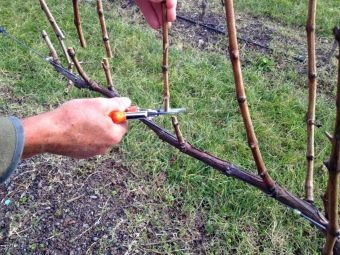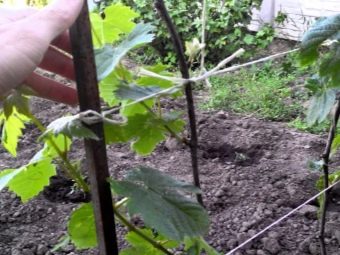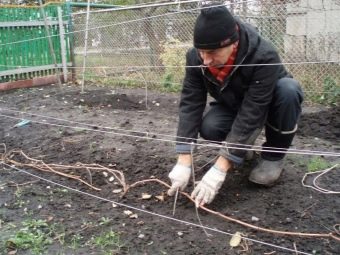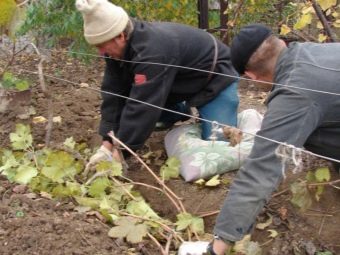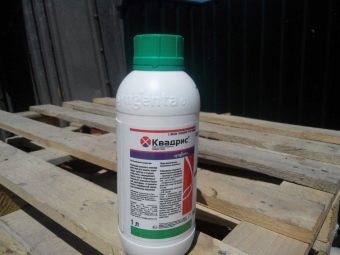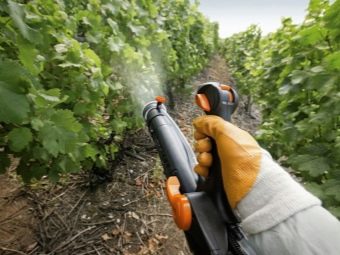Secrets of the cultivation of grapes "Buffet"
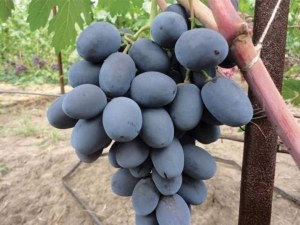
Until recently, the grape was considered a delicate southern berry.For a short summer, the fruit did not have time to ripen, and even the harsh winters could not survive the harsh winters. But lately a lot has changed in gardening. Through the efforts of breeders such grape varieties have been created that grow and produce good yields in mid-latitude conditions. One of the most popular varieties among Russian gardeners is the Buffet grapes.
Origin
"Buffet table" is a hybrid that combines the best properties of "parents": "Kuban" and "Gift of Zaporozhye". The author is Ukrainian breeder-grower Vitaliy Vladimirovich Zagorulko. It should be noted that the variety was bred in 2008, but so far not officially registered in the registers. Despite this, gardeners "Buffet" is well known, and successfully grown with them.
Description and characteristics
One of the important qualities due to which this grape variety is suitable for central Russia, its precocity. For full ripening berries need from 110 to 130 days, depending on the weather, that is, in the middle of August, it may be possible to eat juicy fruits. In the southern regions even earlier. And the taste of berries tasters is described as dessert, it has a slight taste of mulberry, there is a pleasant aftertaste.
Other properties of the fruit may be noted.
- Ripe berries have a dark blue color with a noticeable matte finish. In the process of ripening shades vary from burgundy to almost purple, so the bunch can be colored unevenly.
- The skin of the berries is dense, but rather thin, which is typical for table varieties. The shape is elongated, but close to rounded: in width, the berries reach about 3 cm, in length - about 4 cm.
- The weight of each berry is on average 12-14 grams, but some in favorable conditions can reach 18-20 grams. The mass of the whole hand can be 0.7-0.8 kg, there are cases when the collected clusters weighed more than 1.5 kg.
- The cluster is large, compact, has the shape of a narrow cone, consists of almost equal in size to the poured berries with a small inclusion of unformed small fruits.
When the variety first appeared, such qualities were impressive. Now it may be unremarkable results, but it is worthy of attention.
When choosing a variety for cultivation, gardeners take into account not only the yield and taste of the fruit. You need to know what conditions are necessary for the growth and development of the type you like, and whether it is possible to provide them. Grapes "Buffet" is not more difficult to care than other varieties.
Secrets of agricultural engineering
Any grape variety as a southern crop retains, to varying degrees, qualities such as exactingness to light and heat. With this calculation, and you need to choose a place for landing. "Buffet table" is quite unpretentious, but still it is necessary to provide good illumination for it. Variety grows well in the plains and in areas with a slope. Only lowlands do not fit. On them, plants often freeze, although they are winter-hardy (they withstand temperatures of up to -22 ° C).
Low areas can also be swamped or have a close groundwater table, which is highly undesirable for grapes. The way out is to create good drainage.
Selection of planting material
The future harvest will be affected not only by the growing conditions, but also by the characteristics of the seedlings. The right choice of material is one of the guarantees of a good result.
Experts give several recommendations for the purchase of planting material.
- You should buy from trusted suppliers or in specialty stores where the material has the appropriate documents confirming the quality.
- An important condition is the closed root system of the acquired seedling. Dried roots are unlikely to revive.
- The place of vaccination on the trunk should be clearly visible.
- It is better to purchase seedlings "in season". Early sale is suspicious that stimulating solutions have been used.In this case, the plants could not have time to accumulate the necessary amount of nutrients, they can develop poorly and just die.
- Seedlings should have a healthy appearance, stem and roots without damage.
Landing
Planted cuttings in the ground can be both in spring and autumn. Autumn planting is recommended less often, since a plant that does not have time to get stronger by winter is likely to freeze. In any case, the first wintering landing is recommended to carefully cover.
Planting pits need to be prepared in advance, if you decide to plant in the spring, then everything should be ready in the fall, and for autumn planting - spring preparation. First of all, you need to dig a hole of sufficient volume, taking into account the interval between future plants. Recommended pit dimensions: about 70-80 cm deep and in diameter. Can also be planted in trenches.
The usual layout of the vine is 1.5x2 m, but since the “Fourchette” forms a large shrub with powerful branched shoots, the distance is better to increase to 3x3 m. Such requirements are due to the fact that grapes are grown in one place for 20 years or more, therefore it is better to provide him with the necessary supply of nutrients.
At the bottom is placed gravel, broken brick or expanded clay for drainage. Special soil is prepared, which the pit is filled by about 2/3. The main part of it is well-rotted organic matter (pig or cow dung - about 5 buckets). You can add a couple glasses of ash and a glass of nitrogen fertilizer. Before falling asleep in the pit, all the ingredients should be well mixed.
Before planting, rooted cuttings should be carefully examined and a little pruned. Slightly shortened roots. The stem should be gently diagonally cut to two buds. Is abundant watering. The root system is straightened and covered with damp earth, which is then compacted. So that the moisture from the soil does not evaporate quickly, the surface should be mulched with straw, dry grass or sawdust.
If an autumn planting is carried out, the seedling should be sheltered immediately for the winter. In spring, the planted plant should be applied.
Care
Further care for seedlings is regular watering and dressing. A large amount of fertilizer in the early years is not required, since almost all the food is made during planting. And the excess will not be useful. For example, excessive nitrogen intake will cause increased spore formation and the formation of leaves to the detriment of flowering and fruiting.
You can confine foliar fertilizing infusion of wood ash containing a lot of potassium (glass on a bucket of water), or complex mineral fertilizer, respectively, on the instructions on the package. Spraying of plants is best carried out in cool weather and in the evening, so that the leaves do not burn because of the drops remaining on them. Planting will be needed by plants during flowering and the formation of berries. The best time: the emergence of floral brushes with buds, flowering and the formation of the first green fruit.
From the third year of development it will be necessary to introduce a full range of mineral substances. Very good grapes respond to the use of organic matter.
In the spring, nitrogen fertilizers are applied to improve the growing season, closer to the fall - phosphate fertilizers, which contribute to the ripening and lignification of the shoots so that the vine can overwinter without damage.
Watering volumes are highly dependent on weather conditions of a particular year. If the summer will be hot and dry, then, of course, the plants will need more water, otherwise the berries will not be able to fill themselves and reach their optimum condition. The average rate of watering on one bush of grapes - 2-3 buckets. But the “Buffet Party” usually forms a large number of powerful, fast-growing shoots, and in dry weather an additional bucket or two will not be superfluous for his adult plant.
It should be borne in mind that watering the grapes is not necessary at all stages. In the spring after the snow melts, moisture in the ground is usually sufficient.During flowering, watering is absolutely contraindicated, as this can cause shedding of flowers and, consequently, a decrease in the future harvest. When the berries start to pour, watering should be adjusted according to the weather, but sufficient moisture should be ensured that the fruit does not shrivel and crack. Watering is stopped about a month before the grapes are harvested. And if there is little rain in the fall, it is necessary to shed the ground again before winter.
Formation
One of the most important agrotechnical methods for growing grapes of any variety is pruning. In order for the vine to give the maximum possible yield, it must be properly formed. There are many ways and methods that are most common: stam and fan. "Buffet" because of its tendency to strong spine formation is usually formed by a fan without a trunk, located on the trellis.
In the first year, the cuttings in the fall are pruned to 2-3 buds, of which the next year two escapes are left — the sleeves, shortening them to 3-4 buds. In the fall of the third year, young shoots are pruned to about 50 cm. For the fourth season, 8–9 buds are left on the upper arms, 3–4 buds on the lower knots. In the future, the old sleeves are cut to 2-3 holes for the development of young shoots.
To the trellis bush begin to tie up from the third year. To do this, dig in strong metal pipes or poles. The interval should be sufficient so that the wire stretched between them in several rows does not sag much and is able to hold heavy branches with bunches of berries. Instead of wire, you can use a coarse mesh.
At the "Buffet" grapes usually leave 25-30 full-fledged shoots per bush. In the summer, the extra green branches that emerge need to be carefully broken out, but this is not done during the flowering period. And also it is necessary to cut the additional roots reaching the surface.
Another characteristic moment for a vine is the appearance of old bark on the trunks of exfoliated rags. They need to be removed with the help of special brushes, this technique stimulates the formation of a new upper layer.
Preparing for the winter
Variety "Buffet" is characterized by good winter hardiness, but the weather in central Russia is unpredictable, and if you take the more northern areas, even more so. Winter can be frosty and snowless. Therefore, at least a small shelter for the vineyard is better to organize. The branches are bent down to the ground and covered with spunbond or spruce branches, and sprinkled on top or laid boards. In this state, the vine is likely to win the winter.
Diseases and pests
Unfortunately, a good resistance to disease grapes "Buffet" is no different. Experts estimate this quality in this variety by about three points. The most dangerous fungal diseases for grapes are mildew and oidium. But also the vine can be affected by anthracnose and alternariosis. It is recommended to carry out preventive measures, without waiting for the appearance of signs of damage.
The following preparations are suitable for processing grapes: “Delan”, “Kvadris”, “Topaz” or “Tanos”. Before flowering and after its completion, the bushes can be sprayed with solutions of arceride, polycarbacin or copper oxychloride. 40 g of the substance are diluted in 10 liters of water. After rains, it is recommended to treat with a solution of 80 grams of colloidal sulfur per bucket (10 l) of water.
Insects can cause a lot of harm - lovers to enjoy grapes, as well as snails and slugs. Against them, good results are given by Vertimek and Calypso. You can spray the vine "Fastakom" or "Bi-58". All drugs should be used in accordance with the instructions on the package.
Reviews
"Buffet" - a grape variety, quite popular among gardeners. Most reviews are positive.He is valued for the ability to quickly form a large number of powerful shoots, which allows the use of bushes even as decorative plants in vertical gardening, despite the fact that they are quite unpretentious.
Of course, many people like the taste and quality of berries, which differ in keeping quality and transportability. And the yield is such that the variety can be recommended for cultivation on a market scale.
As a disadvantage, they note that when most of the fruits ripen, they must be removed very quickly. Long berries hanging on bushes can lose their taste, are prone to cracking. Not everyone is satisfied with insufficient disease resistance.
With careful care and proper care, "Buffet" grapes are able to please anyone, even the most picky gardener.
Review grapes "Buffet" see the video below.

